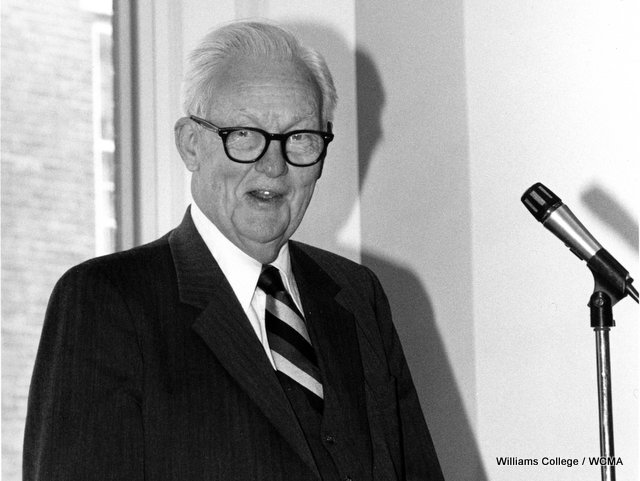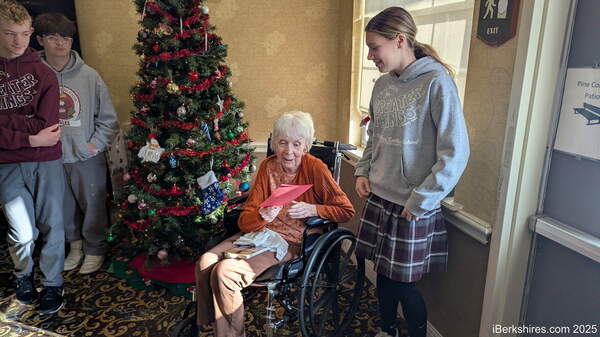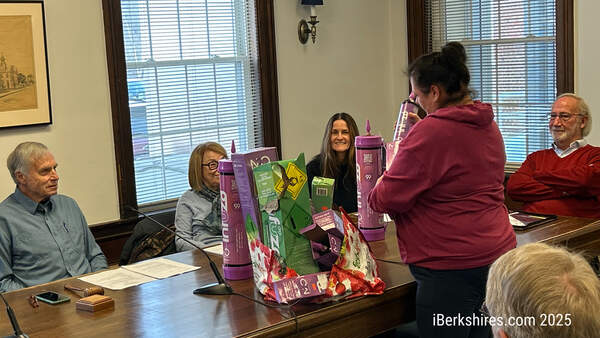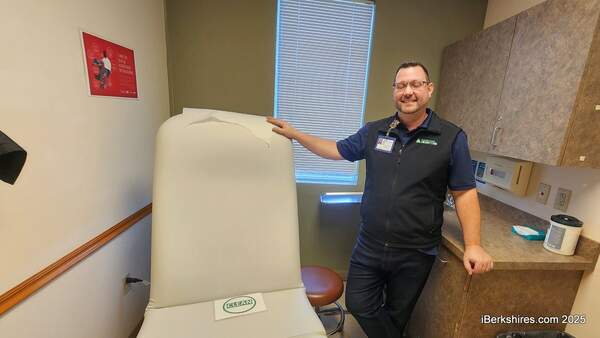Williamstown's Own 'Monuments Man' Documented Stolen Art
 S. Lane Faison, who died in 2006 at age 98, worked with the OSS to save art looted by the Nazis during World War II. S. Lane Faison, who died in 2006 at age 98, worked with the OSS to save art looted by the Nazis during World War II. |
WILIAMSTOWN, Mass. — The just-released film "The Monuments Men" portrays the real exploits of a little-known group of arts experts-turned-military men during World War II.
But missing from the George Clooney-helmed motion picture is one of Williamstown's own: S. Lane Faison.
Faison was assigned in 1944 to the Art Looting Investigation Unit, or ALIU, that was formed and administered by the Office of Strategic Services, forerunner of today's Central Intelligence Agency.
Faison was a professor of art history at Williams College when he volunteered in 1942 for the Navy. While on land duty, he received an unexpected phone call.
"Suddenly, I got a call from a captain in Washington in the OSS ... He asked if I would be interested in duty with a knowledge of art and duty in Europe. I said 'Very much, Sir,'" the late professor recounted in a Dec. 14, 1981, oral history interview for the Smithsonian Institution's Archives of American Art.
And thus began a chapter in Faison's life during which he would gaze in awe at masterpieces not exhibited in museums but hidden in deep caverns.
The Nazis stole thousands of cultural treasures during the World War II era, including paintings and sculptures by such luminaries as Michelangelo and Vermeer, and from institutions and individuals in the countries they occupied. ALIU's primary purpose was to collect and disseminate information bearing on the looting, confiscation and transfer by the enemy of art properties.
As the newest member of the ALIU, Faison underwent OSS training, then joined the other members of the team in Europe.
His mandate was to write the official history of how Adolf Hitler's art collection was formed. Interrogating enemy art looters was one of Faison's duties.
"When we had documents proving certain people had art objects that had been looted, we went to retrieve it, but [the people] would say, 'No, not me ...' " Faison said in an interview with this reporter in May 2006. "I would tell them it would be better for you if you told the truth.'"
Faison was "mustered out" in March 1946, and resumed teaching at Williams.
He had begun what would become a more than 50-year association with the college when entered as student in the class of 1929. He returned to Williams in 1936 to teach art history and by the time he retired in 1979, he had been chairman of the department and director of the college art museum, as well, simultaneously for a number of years.
In 1950-1951, however, Faison was very busy away from Williams. At the bidding of the State Department, he went back to Europe as director of the Center Collecting Point in Munich, and supervised the restitution of millions of pieces of looted art. He stayed in Germany until the complicated process was completed.
"In the course of classes, he loved to make fun of Hitler's taste in art, and he talked about going into the salt mines (deep caverns where the Nazis stashed looted works of art.)," said Williams art professor Eugene Johnson, who had been a student at the college during Faison's tenure. "He threatened toward the end of his life to give a lecture on his involvement [in the ALIU] on his 100th birthday. He never did; I wish he had."
 Supreme Allied Commander Gen. Dwight Eisenhower looks through a cache of stolen Nazi art in this image from the National Archives. Supreme Allied Commander Gen. Dwight Eisenhower looks through a cache of stolen Nazi art in this image from the National Archives. |
Faison died in his home in Sweetwood Retirement Community in Williamstown on Veterans Day 2006, several days shy of his 99th birthday.
On Feb. 4, 2014, Faison's son Christopher attended the star-studded New York premiere of "The Monuments Men."
"I'm happy about the Monuments Men being memorialized; they certainly deserve the recognition," he said, speaking from his home in Connecticut. "Let's hope the movie will lead to further restitution of stolen art still out there in private collections and museums."
In the oral history interview, professor Faison mentioned that one of the "byproducts" of his work with the ALIU was seeing great masterpieces that were collected for repatriation.
Thanks to Faison, the two oldest of his four sons were given an opportunity to look at some masterpieces.
"One day (in Munich, Germany), my father took my older brother, Gordon, and me to his office. 'You'll never see another office like this one,' he said. It was stuffed with great art, including a Rembrandt and a Rubens on the walls, slated for restitution.'They're not mine, but they're yours to enjoy for a few minutes,' he remarked.
"I also remember my father saying, 'I'm not a hero, but Rose Valland was. In Paris, (pretending to be a collaborator) she watched as works of art were shipped from the Jeu de Paume, where looted objects were stored before they were sent to people and places in Germany. In constant peril of losing her life, Valland made mental notes by day, written ones at night. In the movie, her part, under a different name, is played by Cate Blanchette.
"My father is not portrayed in the film, though he played an important role as an interrogator of Nazi officials involved in the heists. These interviews were used later at the Nuremberg Trials, and his reports about Hitler's intention to establish a Fuhrermuseum filled with stolen art are in the National Archives."
Another legendary Williams alumnus, Charles Parkhurst, class of 1935, was deputy chief of the Monuments, Fine Arts, and Archives Section of the U.S. Military Government in Germany immediately following the end of World War II, in which he had served as a lieutenant in the Navy.
"Although Chuck didn't talk much about his service as a Monuments Man until scholarly interest quickened in the 1980s, he was proud of the work he and many others had done, as he recounted, 'to search, and find, and save' art the Nazis had stolen all across Europe and had hidden during the war," his wife, Carol Clark, a professor of art history at Amherst College, said. "He was also proud of his role in the preparation and signing of what became known as the 'Wiesbaden Manifesto,' a November 1945 protest of the U.S. government's planned appropriation of masterpieces belonging to the German nation."
Lynn Nicholas, author of the seminal book "The Rape of Europa" (1994) interviewed both Faison and Parkhurst as did Robert Edsel, author of "The Monuments Men" (2009), on which the movie of the same name is based.
For their efforts in restituting looted art, Parkhurst and Fasion were named Chevaliers of the Legion of Honor - the highest honor bestowed by the French government.
Yet, when Faison was looking forward to the birth of his great-grandchild, he said, to this reporter, in May 2006, "It's the first time I've been a great anything."
Tags: film, nazis, stolen art, Williams College, world war,















